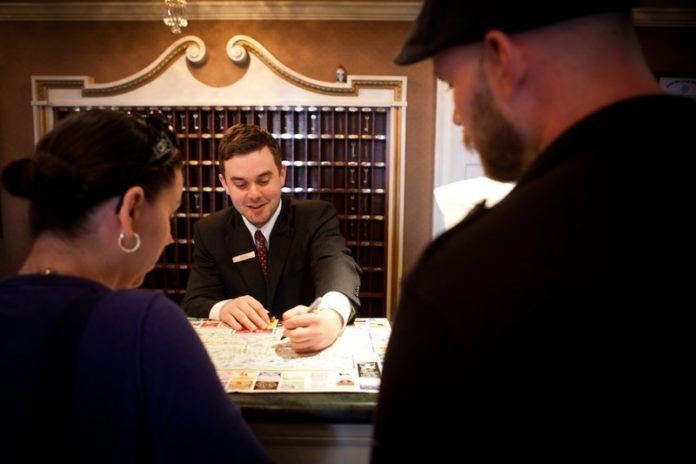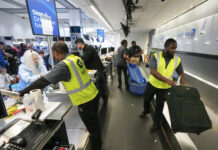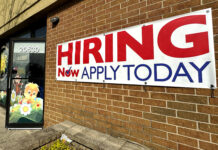
Where group travel goes, so does the economy.
At least that’s the case according to local hoteliers and other hospitality-industry professionals who say that a developing spike in room blocks and meetings is a true sign that, at long last, the economic woes that have plagued their business for the last few years could be almost over.
“This year, it really seems to have turned the corner,” said Mark Gervais, general manager at Hotel Viking in Newport. “We took a pretty good hit when the economy turned abruptly in 2008 and stayed down. [But] we’ll surpass [pre-recession] group-reservation levels by next year.”
The trend is part of a general increase in hotel-occupancy rates that the state is seeing grow at a faster rate than the national average.
“[Hospitality] actually started to slip earlier than the true recession [but] started to rebound faster,” said Martha Sheridan, president and CEO of the Providence Warwick Convention & Visitors Bureau. “[That] might be a good indicator that the economy is on its way back.”
In 2007, just before the economy started on its downturn, Rhode Island’s hotel-occupancy rate was 63.5 percent and its average daily rate (ADR) was $156.23, according to the PWCVB.
By the next year, Smith Travel Research reports – when things really started getting bad – those rates fell to 57.1 percent and $126.59, respectively.
(The PWCVB cautions that the opening of the Renaissance Providence Downtown Hotel in June 2007 could have changed the trajectory of numbers that year.)
Only a drop in business, however, can account for the reduction 2009 saw, when the occupancy rate fell to 54.3 percent and the ADR to $111.92.
Good news started coming in 2010, when rates went to 60.3 percent for occupancy, though they were pretty much stagnant for ADR. Things kept on a modest improvement last year, with occupancy rising to 61.2 percent and ADR to $114.50.
Though no one has a crystal ball and variables such as weather could shift trends away from an upward swing in the coming months, the general feeling is that of cautious optimism.
Rhode Island looks to be faring better than the national average. According to STR, occupancy rates nationwide were at 57.5 percent and 60.1 percent, in 2010 and 2011 respectively. ADR was $98.06 and $101.64 for those respective years.
“We do have a smaller base to work with,” Sheridan said. But, “[We didn’t take] our foot off the pedal during the recession, so we could continue to be in front of our customers and not lose market share.”
Joe McInerney, president of the American Hotel and Lodging Association, said trend watchers also should pay attention to the fact that new-hotel supply has gone down during the recession and that while more people are booking rooms, occupancy rates could be adjusted when supply starts to rise again.
National supply went from 2.2 percent growth around 2009 to .5 percent in 2011. McInerney said it is forecasted to show a 0.8 percent growth this year.
“This year, we will hit the level of ADR [nationally] that we had at the end of 2008,” he said. “There isn’t much more to go. Hotels [should] really grow occupancy and average rate because there is new product coming in and the demand will be greater.”
While the Westin declined to provide any numbers on its occupancy trends, Gervais was happy to report that his hotel has seen more than a 25 percent increase in group reservations over the past year.
“I really judge [improvement] by group business,” he said. “That business really fell off the map.”
Gervais and others say every form of business travel suffered from the American International Group effect born when the company spent hundreds of thousands of dollars on incentive travel only days after receiving a federal bailout in September 2008.
Even now, McInerney said, the busiest hotel day is Saturday, a trend that started pretty quickly after 9/11. Before that, he said, it was Monday through Wednesday.
IHS Global Insight Travel & Tourism Group, based in Lexington, Mass., reported late last fall that the tourism trade saw an overall growth of 13.9 percent from 2009 to 2010, the latest figures available, and that business travelers make up only a small portion of total visitors here.
The Newport and Bristol County Convention & Visitors Bureau reported 6 percent tourism growth last year, according to President and CEO Evan Smith, and projects a 4.5 percent increase this year.
More meetings booked and higher numbers of attendees reserving rooms in advance for those meetings indicates longer lead times – a sign that companies are more optimistic about future financial conditions.
“There are short lead times when you’re in a downturn, as you come out of it” they get longer McInerney said. “That’s happening right now on the meetings-reservations front.”
In 2011, the PWCVB saw approximately 78,000 group rooms booked. The forecast for 2012, so far, is approximately 90,000. The organization also said the number of events that have more than 500 room nights attached increased from 17 in 2011 to 23 this year.
“There’s a few [of those] on newer groups, and tentative room nights are up,” Sheridan said. “I’m not sure if it’s attributable to exhibitors coming back into the fold or attendees or, probably, a combination.”
Either way, more people mean more travel.
And, with more people willing to travel – on both the leisure and business fronts – hotels no longer have to slash room prices just to keep their properties full, Smith said.
“It’s not [some] great thing that happened overnight, but it’s a good sign,” he said. “The best position to fall into is when occupancy goes up and [average-room] rate goes up.” •












